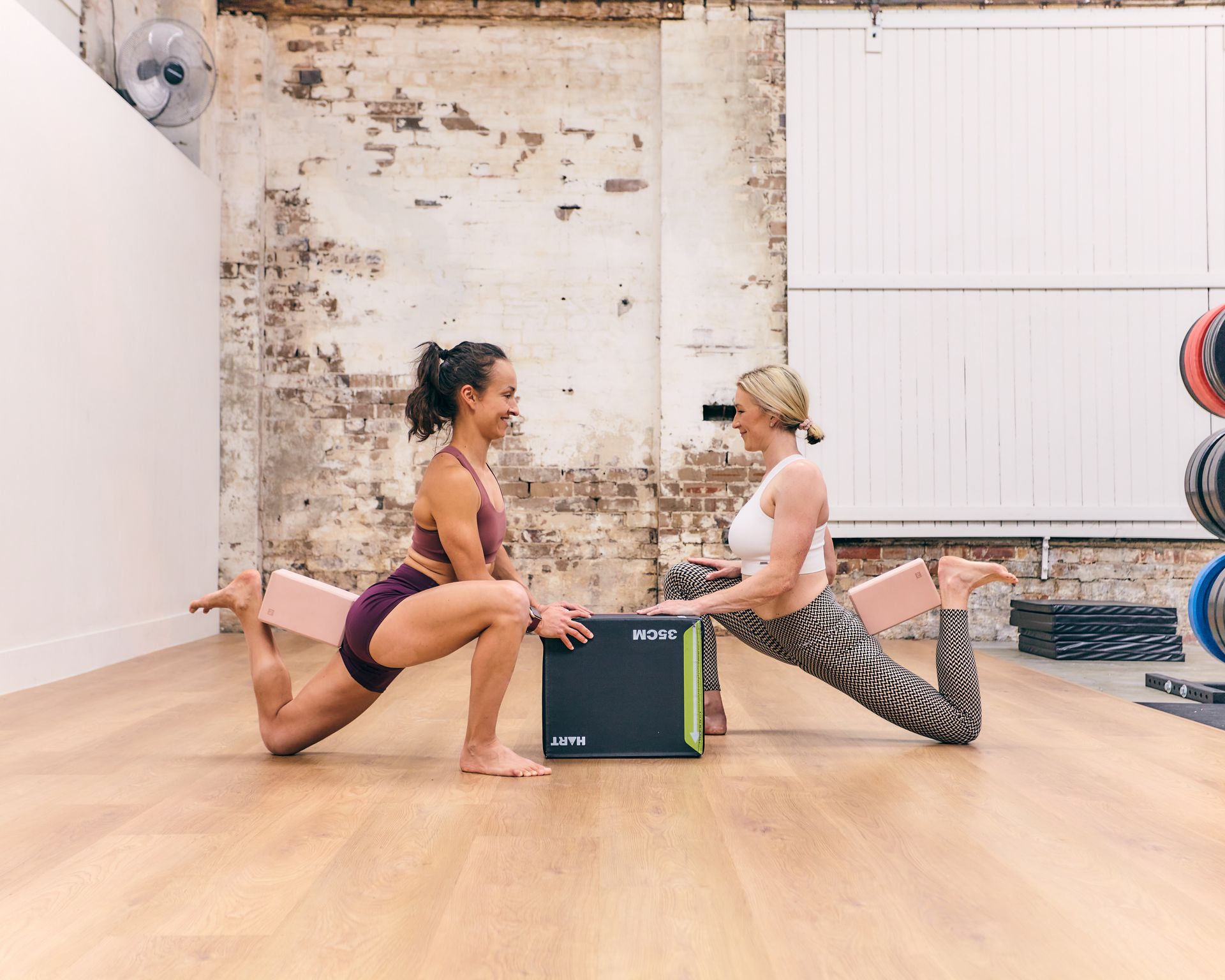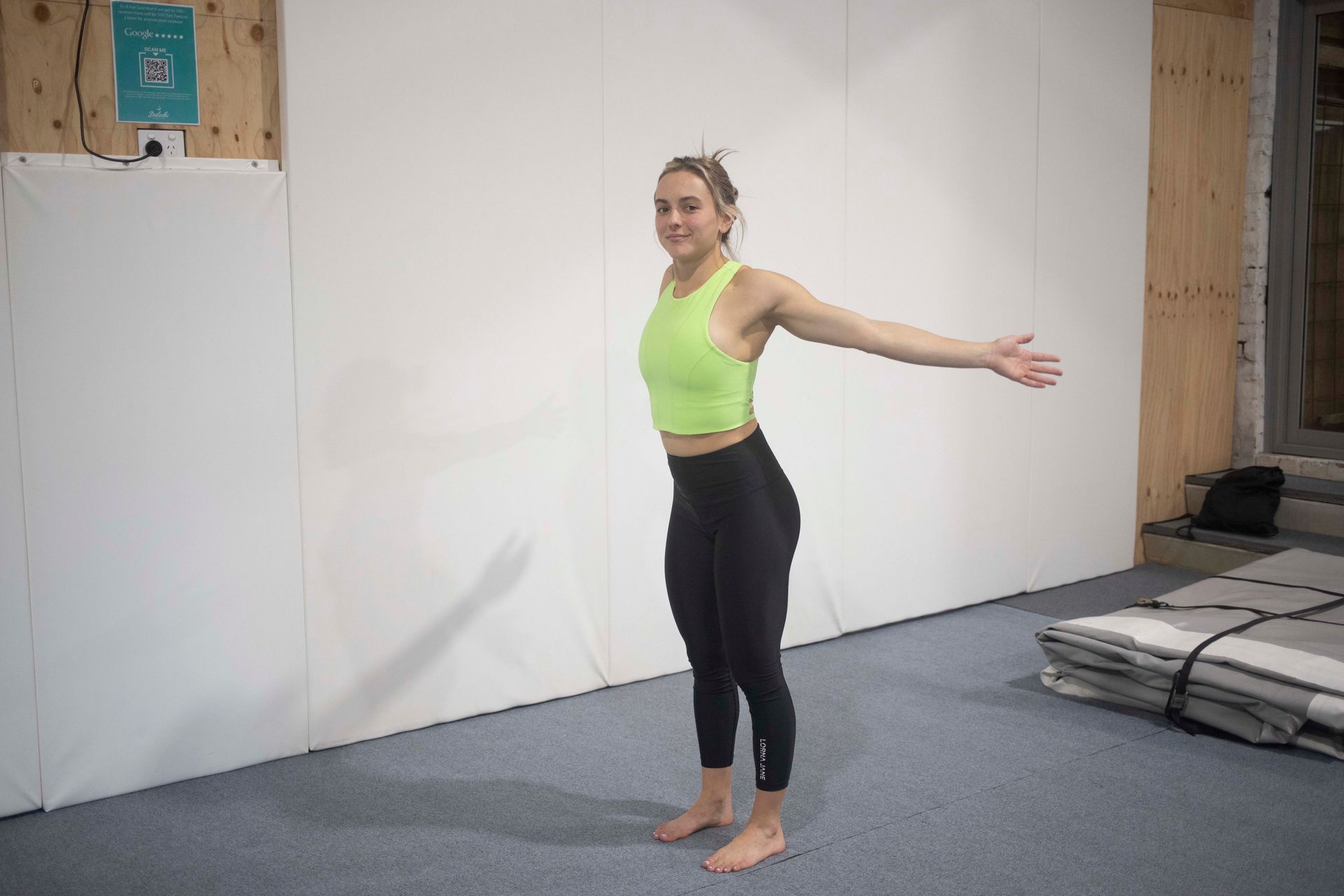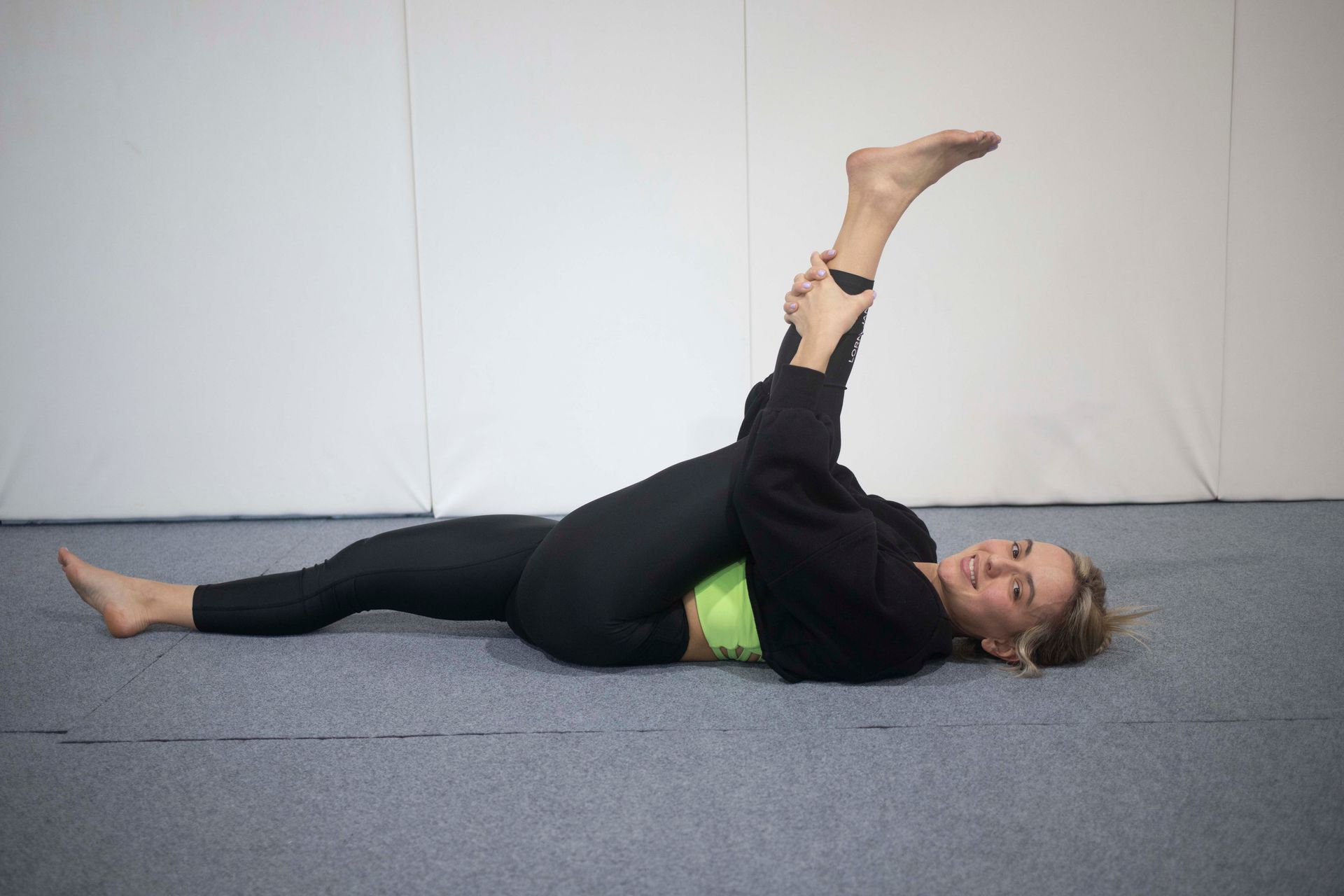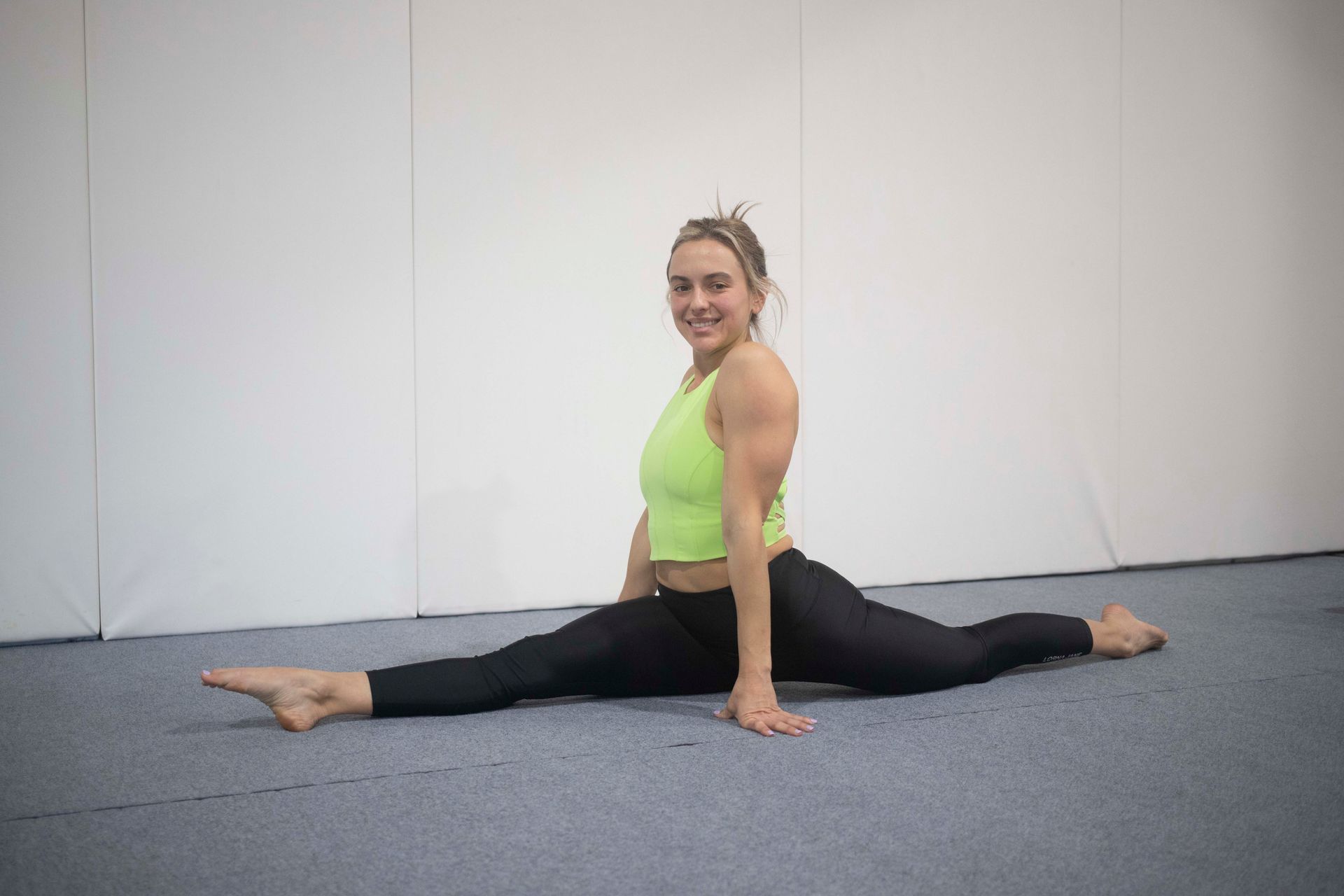Flexibility classes Sydney
Explore the best gymnastics experience for adults at one of Sydney's Highest rated gyms, where our members achieve unmatched results. Our gym is not only family run, but is such an encouraging environment that everyone becomes family.
To ask about our Flexibility Classes, Contact Us
or
What is flexibility?
It is the ability to move your joints and body through range of motion. Everyone has an individual definition of what constitutes “good flexibility” or “being flexible” this is because the context of each individuals goals. Muscle ups require decent shoulder extension, handstands require scapular flexibility.
We want our students to have the flexibility that humans evolved to have. We should be able to take our arms overhead easily, hang from a bar with our body weight, pick things up off the floor easily. All these ranges of motion have decreased significantly due to the reality of the modern living. Our flexibility classes will help you regain control over your body!
What happens in this flexibility class?
It starts with a specific warm up. The range that we are targeting in the class will be warmed up effectively. Next we will be targeting our end ranges of movement with specific strength work. For example, for the front split, we will do strength work for the hip flexors, glutes and hamstrings in the shortening range, We will strengthen the hamstrings and hip flexors on the lengthening side.
What happens in this flexibility class?
It starts with a specific warm up. The range that we are targeting in the class will be warmed up effectively. Next we will be targeting our end ranges of movement with specific strength work. For example, for the front split, we will do strength work for the hip flexors, glutes and hamstrings in the shortening range, We will strengthen the hamstrings and hip flexors on the lengthening side.
Which shapes are taught in our flexibility classes?
Front split legs split apart in a forward and backward direction. You will be considered to be in a split position at any range that you can manage, but typically when referring to a front split it infers the goal of being flat down on the floor. This means the hamstring of the front leg is touching the floor and the quadriceps of the back leg is touching the floor. The angle of the hip is aiming to reach 180 degrees or close to.
Executing the shape on the floor by sitting in the position and having hands supporting you on either side would be considered by most as a passive static position. However, if you have ever tried it, it doesn’t feel passive!
Middle splits
Middle split involves both legs going out towards the sides of the body. There are two versions of this split. Passive would be considered upright but also supporting with the hands. Another version of passive is with the chest and stomach on the floor.
The active variation is an upright torso and no hands supporting. This is a really impressive display of strength and flexibility.
Middle split
Middle split involves both legs going out towards the sides of the body. There are two versions of this split. Passive would be considered upright but also supporting with the hands. Another version of passive is with the chest and stomach on the floor.
The active variation is an upright torso and no hands supporting. This is a really impressive display of strength and flexibility.
Pancake position
Pancake is similar to middle split but not quite. It is called a pancake because the goal is to be on the floor as flat as a pancake! Imagine the body in a seated position with the legs straight infront, then take the legs out as wide as possible (abduct) next, fold forward by hinging at the hips, aiming to get the chest and stomach to the floor. Our flexibility Classes with have you increasing your pancake range in no time :)
The Pike position
The pike shape refers to a body position where the gymnast is sitting or standing with their legs together and as straight as possible, the upper body is hinged forward at the hips, with the arms reaching towards the toes. Essentially the body is folded in half at the hips. That’s why the shape is also called a “forward fold”
The pike shape is commonly used in various gymnastics skills, such as pike rolls, which can be done forwards or backwards. Pike handstand, pike press and various pike flips.
We train the pike shape in flexibility classes at Dalecki Strength because it is a foundational shape that requires strength and flexibility in the hamstrings and hips.
Pike
The pike shape refers to a body position where the gymnast is sitting or standing with their legs together and as straight as possible, the upper body is hinged forward at the hips, with the arms reaching towards the toes. Essentially the body is folded in half at the hips. That’s why the shape is also called a “forward fold”
The pike shape is commonly used in various gymnastics skills, such as pike rolls, which can be done forwards or backwards. Pike handstand, pike press and various pike flips.
We train the pike shape in flexibility classes at Dalecki Strength because it is a foundational shape that requires strength and flexibility in the hamstrings and hips.
The Flexible Bridge position
One position you will find in our classes is the back bridge. The bridge is a beautiful display of flexibility across many joints and muscle groups in the body. Wrists, forearms, shoulders, spine, hip flexors, glutes and quads. This pose also shows a significant degree of strength in order to hold the body in position. The only parts of the body that maintain contact with the floor are the hands and feet.
Skin the cat
This gymnastics exercise is a strong display of shoulder flexibility and strength with the shoulders in extension. This means the arms are fully extended behind the gymnast. To get into the position, the gymnast would start hanging from the rings or the bar and then lifting and rotating the body over the head whilst maintaining grip and lowering until the feet are close to the ground. After that reversing the motion and returning to the starting hanging position.
In our classes we progress our student towards this movement gradually and carefully to ensure an adequate amount of strength and flexibility is achieved. The Progressions can be done with hands on the floor behind the gymnast, or hands on the wall behind the gymnast. Other variations include standing in a forward fold position with the arms coming up into shoulder extension.
Skin the cat in our flexibility classes
This
gymnastics
exercise is a strong display of shoulder flexibility and strength with the shoulders in extension. This means the arms are fully extended behind the gymnast. To get into the position, the gymnast would start hanging from the rings or the bar and then lifting and rotating the body over the head whilst maintaining grip and lowering until the feet are close to the ground. After that reversing the motion and returning to the starting hanging position.
In our classes we progress our student towards this movement gradually and carefully to ensure an adequate amount of strength and flexibility is achieved. The Progressions can be done with hands on the floor behind the gymnast, or hands on the wall behind the gymnast. Other variations include standing in a forward fold position with the arms coming up into shoulder extension.
Who are the people in this Flexibility class?
Adults aged 30-50 wanting to improve flexibility to improve their quality of life. Most of our students have a goal of wanting to do a gymnastics movement like handstand, muscle up. Our community is there to support each other.
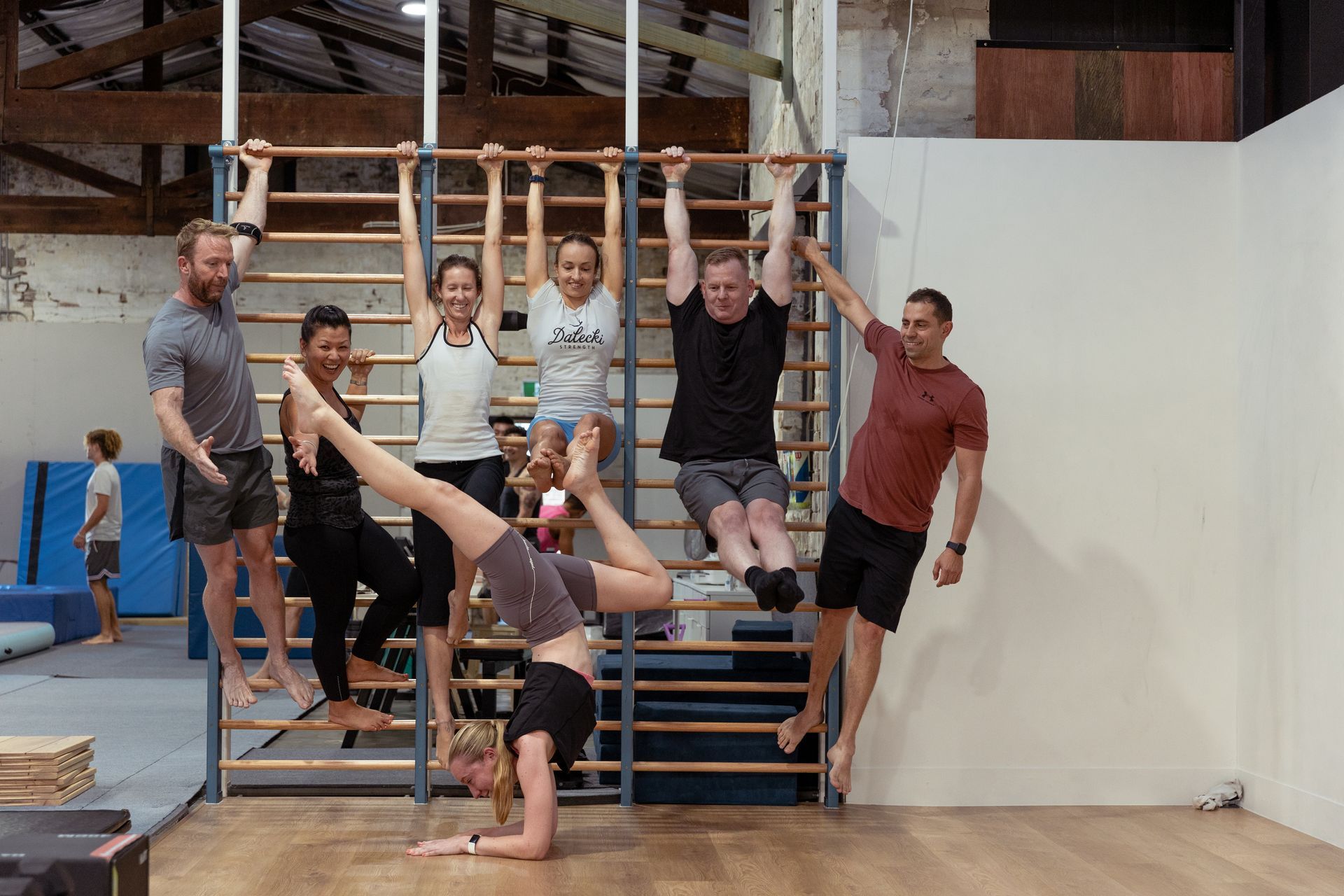
-
Achieve Remarkable Flexibility
Unlock your body's potential and move with ease and grace through targeted stretches and exercises.
-
Enhance Physical Performance
Improve agility, balance, and range of motion to gain a competitive edge in any physical activity.
-
Reduce Muscle Tension and Stress
Release tension, relieve soreness, and feel refreshed and revitalized in a serene and rejuvenating environment.
-
Prevent Injury and Promote Healing
Reduce the risk of injuries, improve circulation, and aid in muscle recovery.
Unlock Your Body's Potential: Achieve Peak Performance with Effective Stretching
Static active
Holding a fixed position (eg static) whilst maintaining tension or a contraction (eg active).
Static passive
Holding a fixed position without a contraction to hold it there. Note, there still may be some tension, but the intention is to relax into the position as much as possible.
I was looking to improve my flexibility, learn proper
handstands
and use my body in a functional way but being on the wrong side of 30 - I thought these were pretty unlikely goals. However, Ev, Kat and the team were so welcoming, helpful and inspiring. Over the last five years they've really helped me to transform my understanding of my limits and achieve things I never would've thought possible.
The classes are accessible and cater to all skill levels, so whether you want to learn a skill, add new movements to your existing workouts or do personal training, you'll find something that works for you. Compared to my traditional training, I find that the community spirit and genuine interest in who you are is a breath of fresh air.
Whether you're looking to improve your flexibility, increase your range of motion, or enhance your overall physical well-being, we have a program that's perfect for you. At our facility, we offer a variety of flexibility classes designed to meet your individual goals and abilities. With our expert instructors and supportive community, you'll have all the tools and resources you need to succeed.
Our gym is fully equipped with a dedicated area for flexibility training, complete with stretching mats, props, and other specialized equipment. Whether you're a beginner or an advanced practitioner, our classes cater to all levels of experience. Our instructors will guide you through a series of exercises and techniques that will help you improve your flexibility and achieve your desired results.
If you're interested in joining our Flexibility classes, we invite you to come in for a session. This will give you the opportunity to experience our classes firsthand and meet our experienced coaches and fellow students. We're confident that you'll enjoy our classes and the supportive community that we've cultivated here at our gym. So take the first step towards a more flexible and healthier you by joining our Flexibility program today.
To get started, book a call. Our friendly staff will ask about your level and goals, provide a quote and get you started with the onboarding process.
FAQs
Got a question? We’re here to help.
-
Why does flexibility matter?
In gymnastics, many of the skills we want to achieve, require us to have the ability to express our range of motion in different ways. For example, we might want to perform a cartwheel, an expression of dynamic active flexibility. Or we might want to hold a split handstand, an expression of static active flexibility. Gymnastics requires a combination of all four types of flexibility, which is why we must train each element of flexibility specifically.
-
What are the requirements for our flexibility classes?
There are no entry requirements for this flexibility class. We help you find the correct progressions for your level. It does not matter if you are inexperienced. Flexibility and end range strength methods are for everybody.
-
How long does this flexibility class go for?
This flexibility class goes for 60 mins.
-
How many people will be in this flexibility class?
There are total 8-10 persons in the flexibility classes
-
What will we be doing in this class?
Specific warm up for 5 mins. 3-5 rounds of specific lower end range work. 3-5 rounds of upper body end range work. Practising our flexibility shape. Long passive holds to finish.
-
What are some of the beginners doing in this flexibility class?
Beginners and advanced follow a very similar program in terms of which stimulus is prescribed. However, positions are regressed for beginners as required. For example, beginners in a pancake shape may need different aids to help them get into position. A yoga block may be used to sit on in order to help the person hinge properly at the hip and get the desired stretch.
-
What are some of the advanced people doing in this class?
Advanced students will follow a similar program to beginners but it will be progressed to the appropriate level. For example if pancake shape is already achieved to the floor, a progression can be introduced where heels are elevated so that extra range can be accessed. In other cases, the position can be modified, load can be added or reduced, the coaches are very skilled at ensuring the correct level of difficulty is achieved for advanced students.
©2024 DALECKI STRENGTH. All right reserved.
Web Development and Strategy by NoCoincidence

